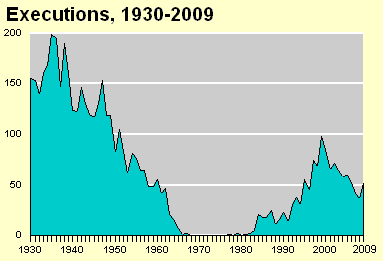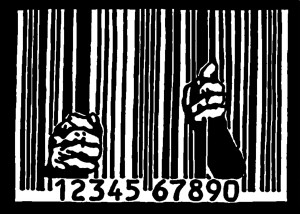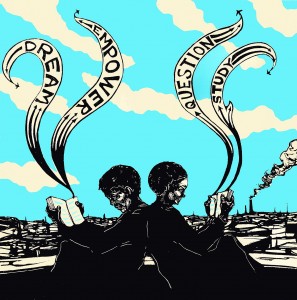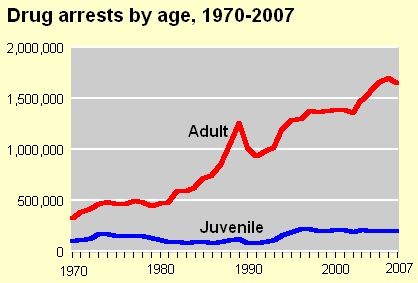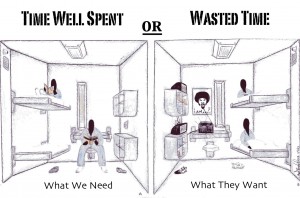I have been thinking a lot about this question lately after reading about the way that Lil’ Wayne described his typical day at Rikers Island where he is incarcerated. He left the impression of living a relatively “comfortable” existence even while being locked up in a cell. So I was curious to ascertain whether there was such a thing as a 5-star prison cell.
In my research, I came across this 2007 New York Times Article titled For $82 a Day, Booking a Cell in a 5-Star Jail. The article included the photograph below.
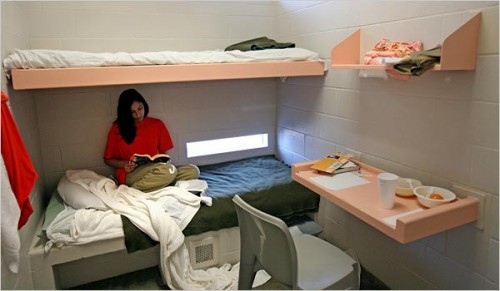
This jail cell does not look particularly “luxurious” to me. I particularly hate the color pink so for me it would add to the torture of being cooped up by myself in this cell.
The article offers the following insights:
For offenders whose crimes are usually relatively minor (carjackers should not bother) and whose bank accounts remain lofty, a dozen or so city jails across the state offer pay-to-stay upgrades. Theirs are a clean, quiet, if not exactly recherché alternative to the standard county jails, where the walls are bars, the fellow inmates are hardened and privileges are few.
Many of the self-pay jails operate like secret velvet-roped nightclubs of the corrections world. You have to be in the know to even apply for entry, and even if the court approves your sentence there, jail administrators can operate like bouncers, rejecting anyone they wish.
“I am aware that this is considered to be a five-star Hilton,” said Nicole Brockett, 22, who was recently booked into one of the jails, here in Orange County about 30 miles southeast of Los Angeles, and paid $82 a day to complete a 21-day sentence for a drunken driving conviction.
First, it is my firm belief that people who who commit “relatively minor crimes” should NOT be in jail or prison in the first place. Second, it seems hard to believe that there exist such things as “self-pay” prison cells but unfortunately it turns out that this is not someone’s idea of a bad joke. Of course, the vast majority of people who are incarcerated could not afford to pay rent for their cells.
Nevertheless some prisons with far less “attractive” surroundings have taken to charging prisoners for cell space in the last few years. We already know that prisoners are gouged for basic supplies like underwear, soap, toothpaste, shampoo, and the like. This is obscene and wrong. Jails and prisons are filled with poor people who cannot afford much on the outside so to charge them an arm and a leg for basic supplies on the inside is simply exploitation.
The Times provides a chart outlining some of the amenities that self-pay cells offer
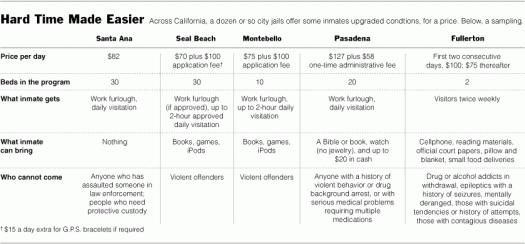
Curious to find other examples of so-called “luxurious” prison cells, I came upon the following blog post at the Wacky Owl. Basically the blog post identifies what the author calls the five most luxurious prison cells.
The blogger begins the post as follows:
What is the first thing that comes to your mind when you hear of a prison? Dark and dull walls surrounded by lots of fencing, a large gate and armed watch towers, dusty playgrounds and all this at one of the isolated corners of the city. Inside, around a 6 by 8 feet room guarded by the solid or barred doors with some furniture and fixings on walls and floor. That’s a usual sight you would notice at prisons round the world that house the most inhumane masses who have been sentenced for imprisonment for their disrespectful and unlawful conduct in the society. However, surprisingly a few lucky criminals also get to taste the prison life with a flavor of luxury and believe or not, that even could be equivalent to living in a five star hotel.
The writer discusses prisoners as “inhumane masses.” That’s a tip off that the author is not going to be a prison abolitionist or even a reformer. The kicker is this sentence in the blog:
So let us take a look at the top five luxurious prisons and their lavish cells where prisoners wouldn’t mind their sentence extended for a longer time.
What’s your answer to my opening question: “Is there such a thing as a 5-star prison cell?”
